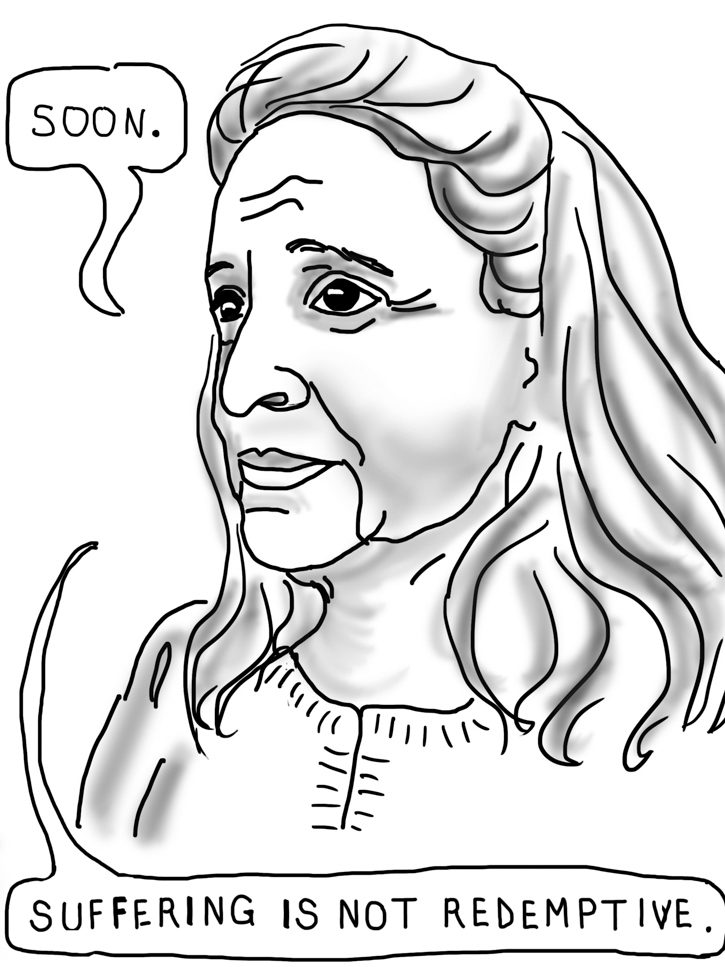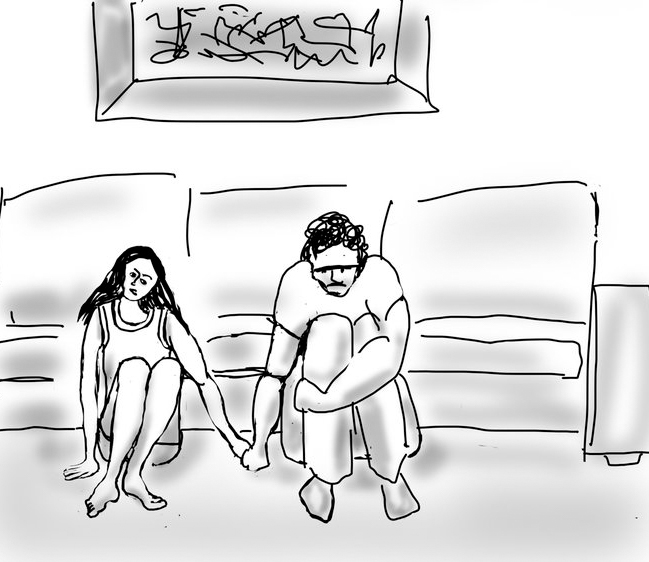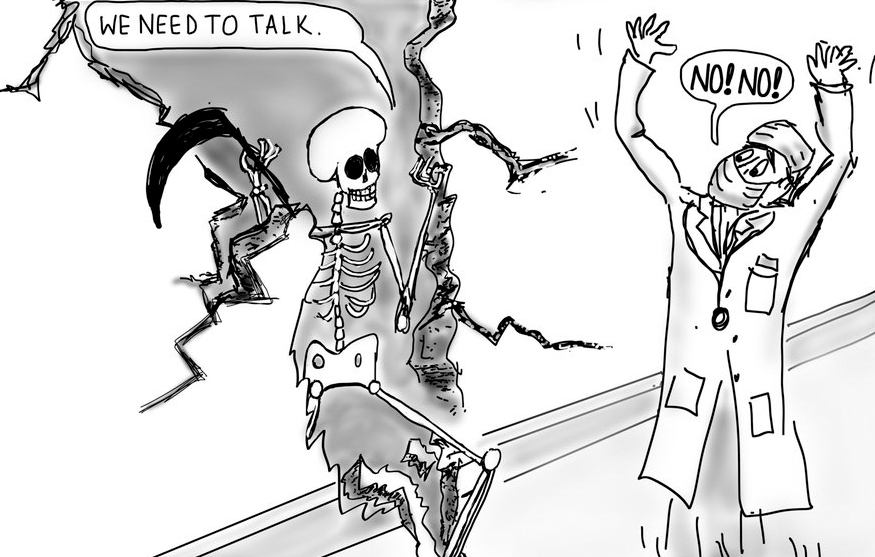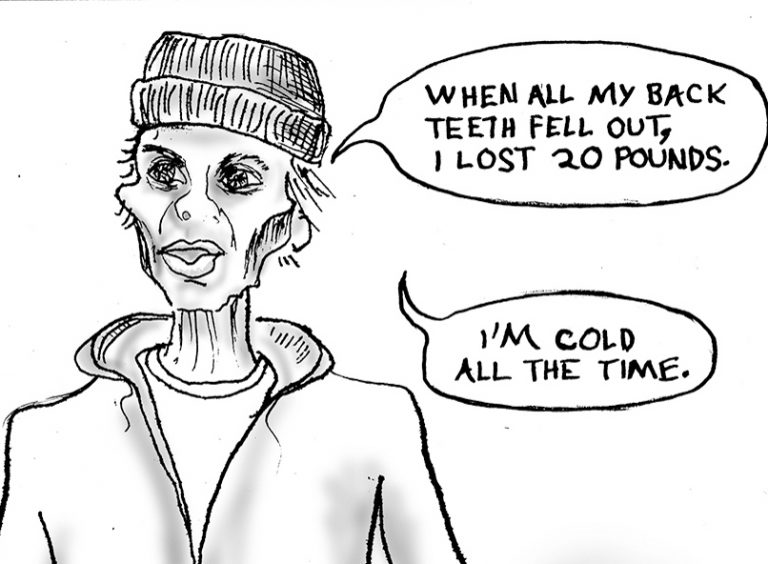Drawn to the End
I’ve always liked comics and started drawing graphic memoirs a few years ago. Over and over my themes are Illness and death (not my own, so far). Now I am sharing them online, hoping these stories resonate with others.

Posey’s Plan is a memoir of my neighbor’s timely death. It tells the true story of a woman I came to know as she planned her own demise. She was a strange semi-recluse who chose me and a few other neighbors to confide in.
After she died—in her own time, in her own way—I spent a year writing and drawing her story. It was a compulsion to tell what had happened.
Death and dying were often on my mind already. Comics were the medium because, well, I just like cartoons as a way to tell a story.
Dying at Home
What got me started witnessing death unafraid was my father’s passing in the early 1970s. Though it was hard, I found I wanted to sit with my Dad as he got sicker.
It wasn’t until 2018 that I drew a comic about the experience. It is published in the online magazine, The Intima, a Journal of Narrative Medicine. Here is the link to the story of my Dad: A Death in Chicago, 1972.


It was a time of momentous change in the way Americans thought about death. Elisabeth Kübler-Ross started that change with her book, On Death and Dying. The author/psychiatrist visited my dad and family. She arranged for something unusual at that time—the end to hopeless treatment and a return home to die.
The Intima comes from Columbia University’s Narrative Medicine program. It’s part of a movement that uses storytelling as a way for caregivers and patients to gain a deeper understanding of themselves and each other. People involved in the field include those who provide health care, those who need it, and families and friends.

I printed some copies and did a presentation about Posey’s Plan at a Comics and Medicine conference in Vermont in 2018. I was then invited to exhibit illustrations from the memoir and spoke on a comics panel at Reimagine End of Life event in New York—a death panel!
Learning Cartoons
Before I started making graphic memoirs, I had admired and drawn comics on and off for years. It was a method that pestered me, but I didn’t know how to get past pencil drawings.
A course at the School of Visual Arts in New York City in 2015 showed me how. In the class, our assignment was to produce a multi-page comic.
Beautiful Brian
A memoir about an old friend emerged during the semester. Brian was an especially good-looking young man. He and I were each other’s sidekicks, spurring each other to more and more outrageous behavior. We were Patti Smith and Robert Mapplethorpe (just friends division) without ambition, drive, or extraordinary talent.
Just as the class began, I saw Brian for the first time in years. He was ravaged by illness. I wanted to write and draw hat emotional and revealing visit.
The comic memoir that emerged from that course is called Beautiful Brian. The link is to my travel blog where I published it awhile ago.

I made a few copies, shared it with my classmates and a few friends including Brian, who said he liked it though it revealed flaws in both our characters.
My classmates were much younger than I, wonderfully accomplished, mostly drawing thrillers and monsters. We interested each other. They were especially curious about the LSD trip drawn in one panel. Their 20s in the 21st century were different from my 20s in the 1970s. I had run around the country looking for adventures rather than finishing college and finding a decent job. They were using the course to add skills to make them more employable.
Our SVA teacher, Keith Mayerson, had us ink our comics by hand. I will never do that again. Unlike my classmates, I’m an untrained artist, and my inking was a mess. As a photographer in my daily life (working for city labor unions), Photoshop was my friend. As with my writing, nothing I do is satisfactory until I redo it and redo it and redo it. Photoshop allows me to change my lines and move things around endlessly. I don’t drip blotches of ink either. Photoshop and I are still besties.
The Future in Death
In this time of a deadly virus, I hope it offers perspective and I would like to offer best wishes for health, well-being. May we all be able to look clear eyed at the end of life. Fat chance.
But perhaps these stories will show some of what we have in us. Our characters don’t change as we go or help others to go. Can we live with that? How can we die with that?
More to Death and Comics
A review of my comic, Death in Chicago in The Intima by Jonathan Garfinkel, “On Compassionate Storytelling in Graphic Memoir: Pat Arnow’s A Death in Chicago, 1972: Elisabeth Kübler-Ross and My Family.”
A comic published serially that I admire, How Mom Died.
Graphic Medicine, the website for all things comic and medical.
The Intima, the journal of narrative medicine.
Columbia University’s Master of Science in Narrative Medicine program, “Transforming healthcare one story at a time.”
Reimagine is a group that puts on events around the country about the end of life. Reimagine https://letsreimagine.org
Here’s the character who got me started as a fan of comics, Alfred E. Neuman, mascot of Mad Magazine:
